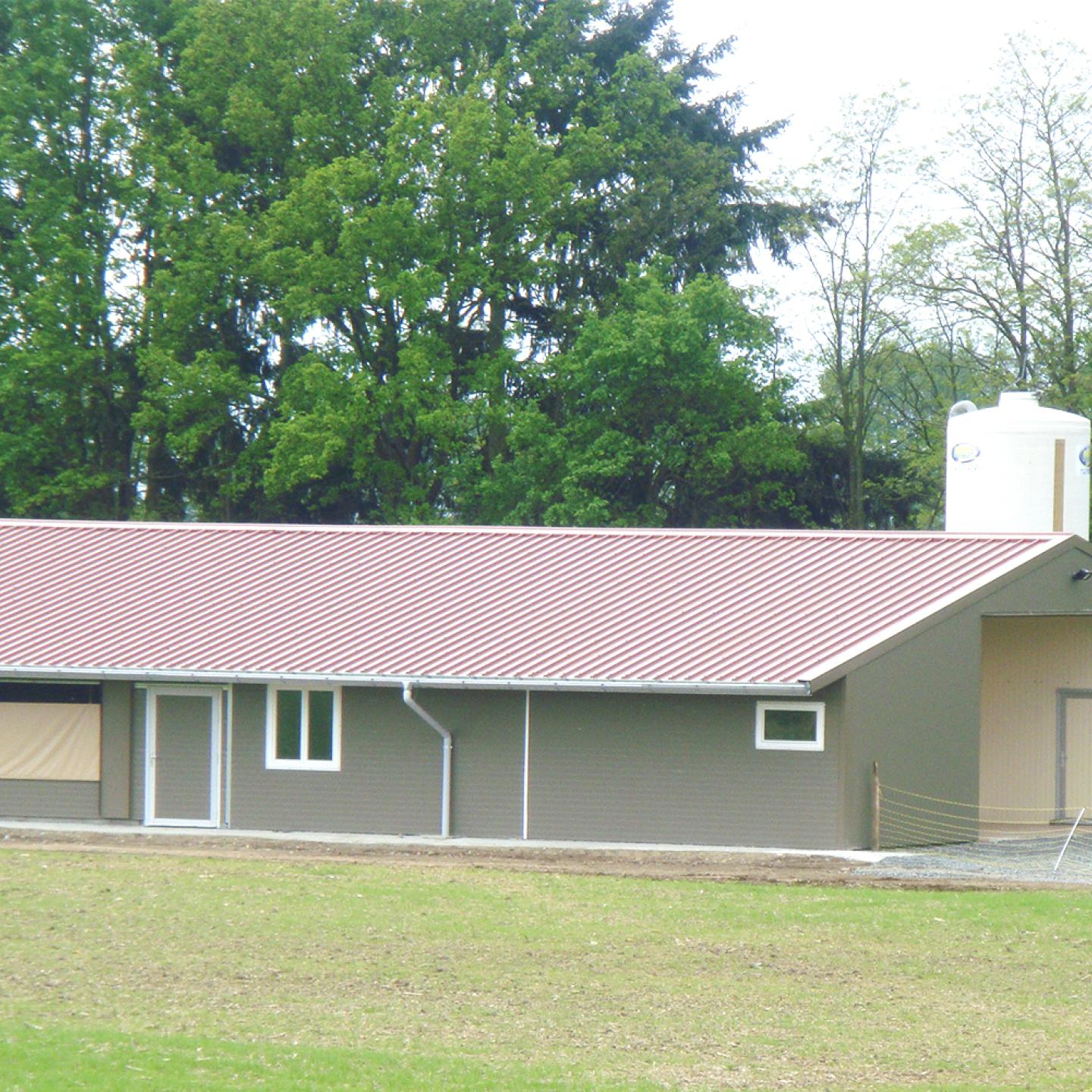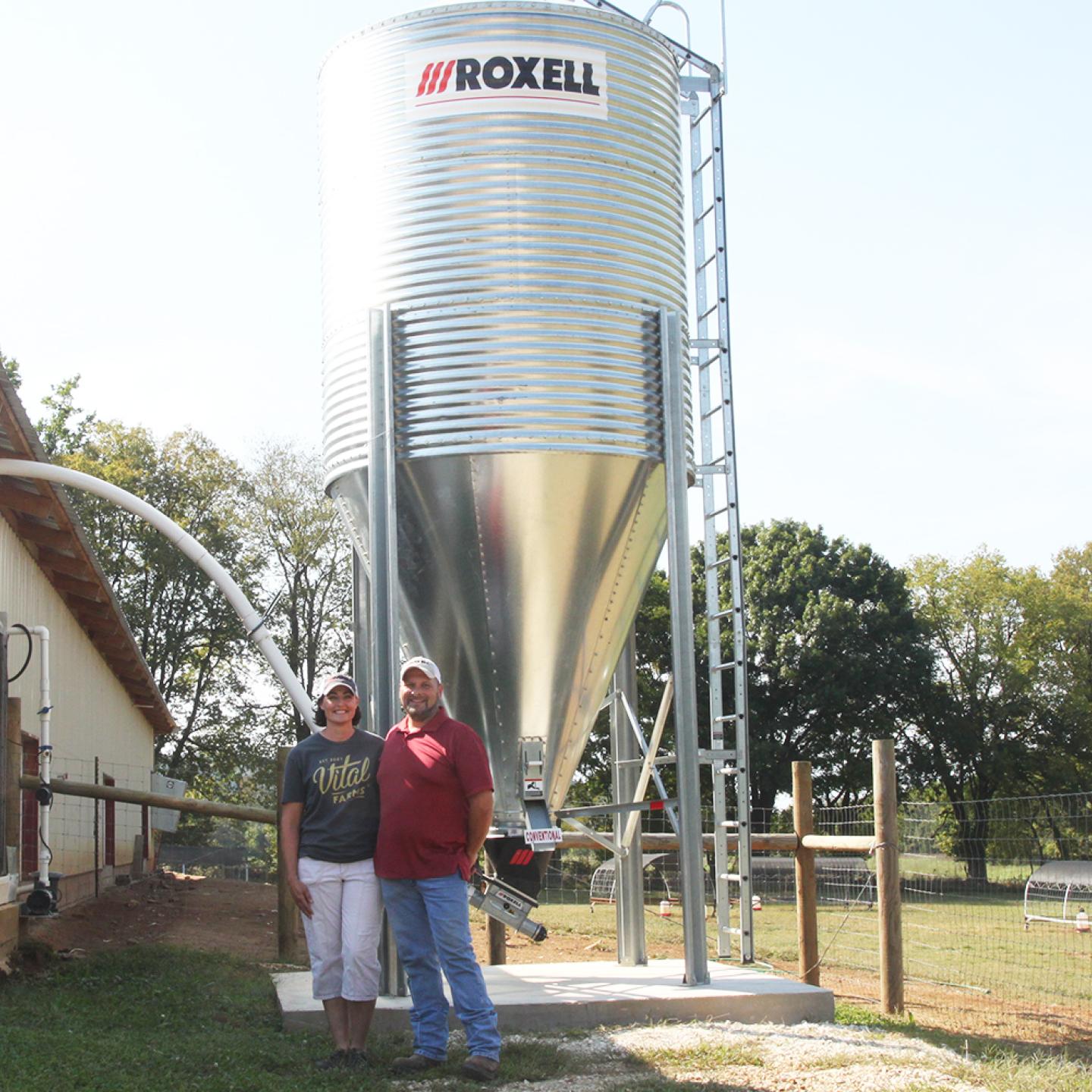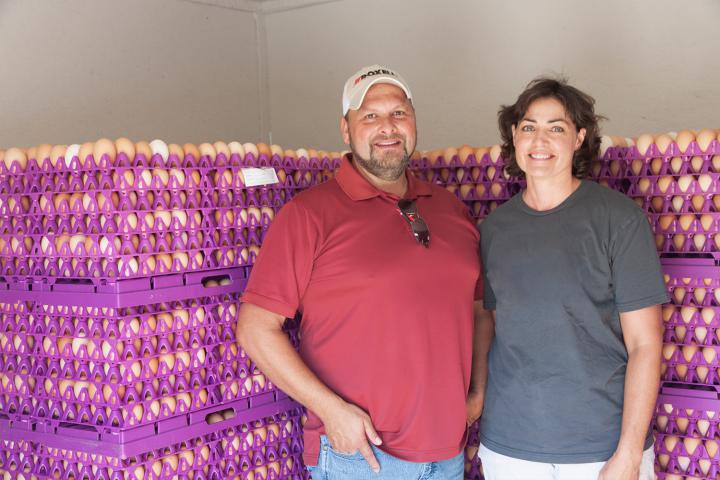A successful story about organic egg production in Arkansas
Organic farming, which includes organic egg production, is a growing trend in US agriculture. In organic poultry production systems, birds are raised without cages in housing that allows outdoor access, are fed organic feed and managed with proactive practices and natural treatments.


The number of certified organic layer hens produced in the US is more than 5.5 million. More than 80.4 million dozen organic eggs are produced on 978 farms. One year ago, Suzanne and Shaan Glenn started up their organic layers farm in Northwest Arkansas.
Two new houses accommodate 4600 Bovan Brown commercial layers. An outdoor area of 2 x 5.5 ac or 2 x 2.2 ha provides more than enough free range per layer. The houses were fully equipped with Roxell systems: LaiCa™ as feeding system, the Roxell drinking system, a Koozii® nest with lifting floor, the Flex-Auger™ transport system, and the feed bins.
Although Suzanne is an experienced broiler farmer, she decided to be guided from A to Z by Roxell.

"We implemented the prescribed light schedules (17h light, 7h dark) and installed a sufficient number of feeder pans to allow 27 layers to be fed per pan. There are on average 7 feed cycles per day. Collecting the eggs in both houses takes approximately 4 hours. The eggs are collected daily at 7 and 11 o'clock and in the evening with the egg collector.
During our first flock, we achieved an egg production peak of 97% over 24 weeks. At the end of the flock we still achieved 84% with a significant feed saving of 1 pound per bird per day." In addition, the mortality rate is limited. During this flock, they lost 2 birds per week per house.
Suzanne and Shaan are now preparing for the second flock and anxiously look forward to the next results.
